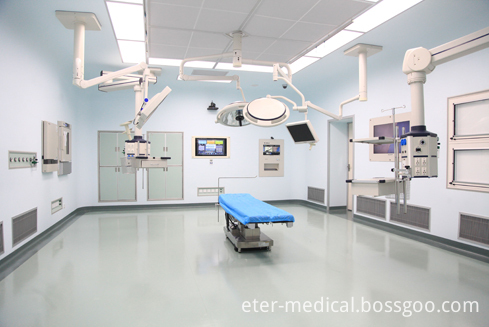1 empty period The breeding and management of ewes during the empty period is relatively extensive, and their dietary supply is usually slightly higher than the maintenance level needed to maintain daily needs. Generally, no supplements or only small amounts of hay are supplied. However, due to factors such as age, parity, number of lambs, and length of time, the condition of the ewe differs greatly. The reserve young ewes are still in the stage of growth and development before estrus and breeding, and need to provide more nutrition, high milking power or ewes with twin lambs, during the lactation period, nutrient consumption, falling out of the fast, weak body condition It is necessary to strengthen supplementary feeding so as to recover the lynx and body condition of the ewes as soon as possible. 2 during pregnancy Pregnancy can be divided into two stages, pre-pregnancy and late pregnancy, about 5 months. The pre-pregnancy period, which is the first 3 months of pregnancy, is characterized by a relatively slow weight gain of the fetus. The required nutrients are basically the same as the empty period. In summer and autumn, the feeding of ewes is usually based on grazing in the first trimester of pregnancy. No supplements or small amounts of supplements are used. In the winter and spring seasons, some fine material or hay should be added. In the second trimester of pregnancy, which is the second month of pregnancy, when the fetus grows rapidly, 80% to 90% of the fetal gain during pregnancy is completed at this stage. Therefore, this stage needs to provide ewes with nutritious, full-priced feed. If the ewes are undernutrition during this period, the poor ewes will affect the growth and development of the fetus, leading to small birth weight, thin coat, poor physiological function, poor thermoregulatory capacity, weak resistance, and high risk of disease. The survival rate is low. At this time, in addition to grazing, ewes must be fed with a certain amount of mixed concentrate and high-quality green hay. According to the grazing conditions of the ewes, 0.45 kg of fine material, 1.0-1.5 kg of hay, 1 kg of silage, and 0.5 kg of carrots can be supplemented each day. In the management of ewes during pregnancy, early abortions should be prevented in the early stages, and premature ewe should be prevented from occurring due to accidental injury in the later period. Flocks should avoid eating frozen feeds, moldy and deteriorating feeds, and drinking water; preventing frightening goats and not catching hurries; avoid crowding when entering and exiting the ring; have enough grass racks, troughs and sinks to prevent drinking Abortion caused by crowded feeding. The ewes can be kept in the waiting area for about 1 week before the expected date of birth, and they can exercise properly. 3 breastfeeding In the traditional sheep production, the lamb's lactation period is 3-4 months and can be divided into two stages: pre-lactation and post-lactation. In the pre-lactation period, 2 months before breastfeeding, breast milk is the main source of lamb. When the amount of breast milk is large and sufficient, the lamb will have fast growth, good physical condition, strong resistance to disease, and high survival rate; on the contrary, it will be detrimental to the growth and development of the lamb. Therefore, we must strengthen the feeding and management of ewes before lactation and promote their lactation. The pre-lactation period of ewes is generally in the early spring withered grass, poor grazing conditions, grazing alone can not meet the ewes lactation needs, they must feed forage. The amount of supplement should be based on the body condition of the ewes and the number of lambs that are sucking. The lambs producing single lambs have 0.3-0.5 kg of supplements per day, 1.0 kg of hay, and 1.5 kg of juicy feed. With a double lamb ewes 0.4-0.6 kg per day, 1 kg of hay, and 1.5 kg of juicy feed. About 1 month after lambing, the ewes' milk yield peaked and gradually declined after 2 months. At this time, the lamb's growth and development intensity, rapid weight gain, increased demand for nutrients, breast milk alone can not fully meet the nutritional needs of the lamb. At the same time, the gastrointestinal function of lambs over 2 months old has become more and more perfect, and the dependence on breast milk has decreased. Certain quality grasses and mixed concentrates can be used, and the ewes' lactation also enters the later stage. For the ewes in the later period of lactation, grazing should be the main method and supplementation should be supplemented. Gradually feed supplements should be cancelled to supplement the hay and replace them. The supplement level of ewes should be adjusted according to the body condition of the ewes, and the body condition should be supplemented with poor body condition. After weaning, the lambs can be grouped according to the body condition and reared separately to improve the targeted feeding and supplement effect.
Cleaning Engineering For Hospital
The
medical clean engineering system covers clean operating rooms, ICUs,
disinfecting supply rooms, laboratories, clinical laboratories, vein
deployment centers and other sites. Decoration materials, clean
air-conditioners and medical devices that meet the cleanliness
requirements must be adopted to ensure cleanliness, especially for clean
operating rooms, ICUs, disinfecting supply rooms and other sites
subject to cleanliness requirements of the hospital.
Cleaning Engineering For Hospital Cleaning Engineering For Hospital,Environmental Services Hospital,Clean Operation Theatre Engineering,Medical Air-Cleaning Engineering Hunan Eter Medical Co., Ltd. , https://www.eter-tech.com